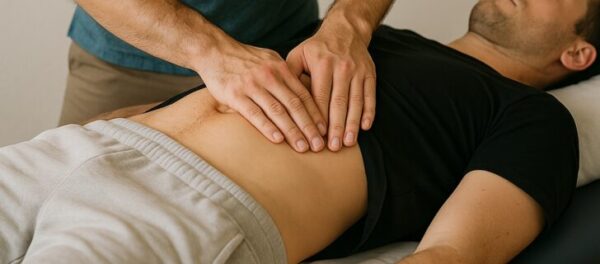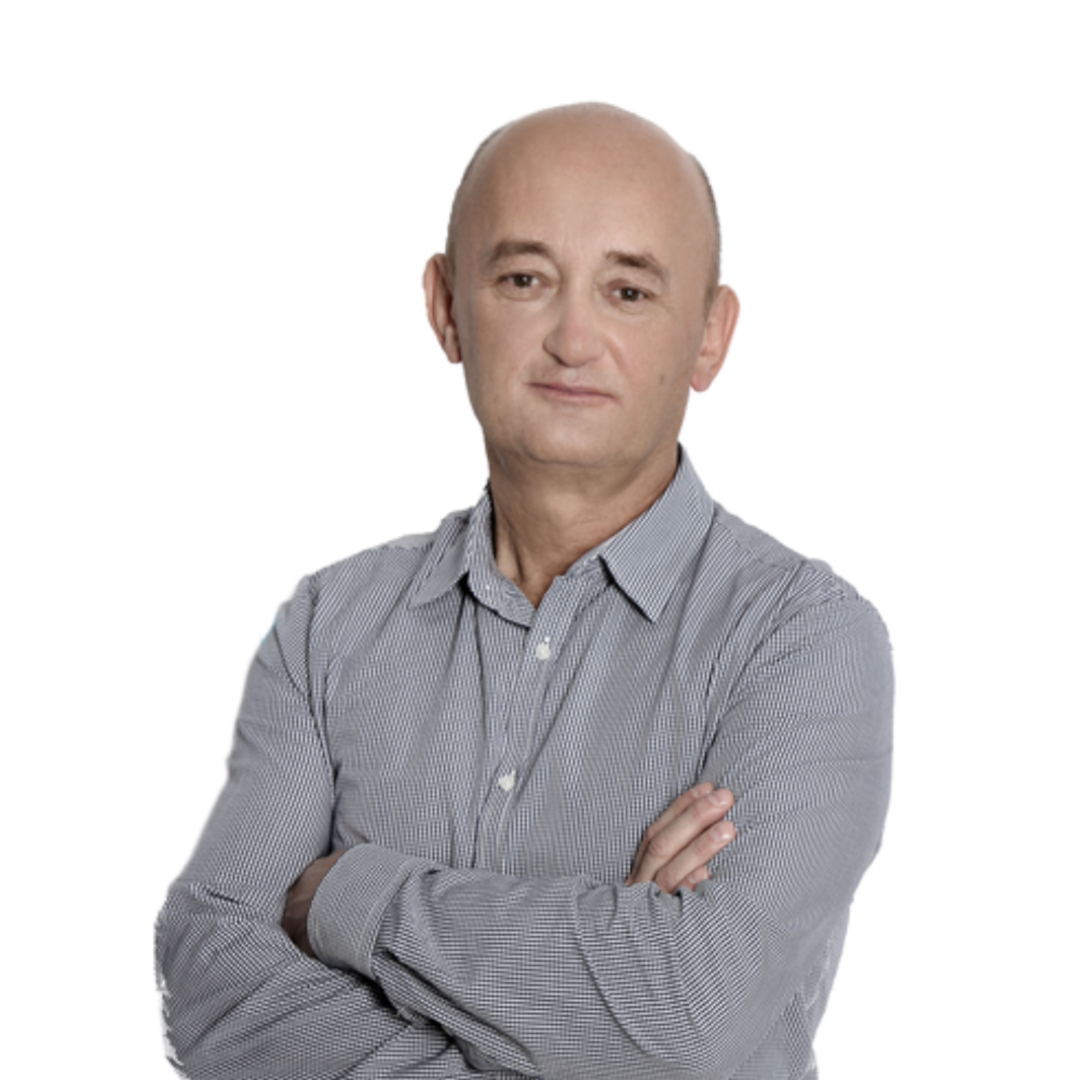
Functional Visceral Therapy
2 600,00 zł
Functional Visceral Therapy (FVT) is an original form of visceral therapy, which was created on the basis of numerous professional experiences of Władysław Batkiewicz, author of the book titled “Old Slavic Abdominal Massage”.
Functional Visceral Therapy (FVT) is an original form of visceral therapy, which was created on the basis of the Old Slavic Abdominal Massage. The training materials have been significantly expanded to include the numerous professional experiences of Władysław Batkiewicz, gained during many years of contact with the Microkinesitherapy Center in France, with the Medical University in Lviv (Department of Alternative Medicine), with the HeartMath Institute in California and personal contacts with patients in his own office.
Władysław Batkiewicz – Functional Visceral Therapy
FVT, based on the Old Slavic Abdominal Massage, is a method of holistic therapy for functional disorders of the gastrointestinal and genitourinary systems.
The causes of dysfunction of these systems may be:
- tension disorders within the ANS (concerning both sympathetic and parasympathetic innervation),
- abnormal tension in the striated muscles of the lower and upper limbs
- abnormal tensions at the level of abdominal ligaments, peritoneum, smooth muscles,
- dysfunctions of the peripheral joints of the upper and lower limbs and the joints of the spine,
- defective circulation of body fluids: blood, lymph, bile; pancreatic, gastric and intestinal juices and urine.
Basic therapeutic techniques of Functional Visceral Therapy
Functional Visceral Therapy is ideal for treating conditions such as:
- constipation,
- irritable bowel syndrome,
- intestinal colic,
- digestive disorders,
- bloating,
- prostate problems,
- postpartum urinary incontinence,
- problems with urination in men,
- postpartum urinary incontinence,
- dysfunctions of the joints of the upper and lower limbs and the joints of the spine.
- FVT is also an ideal prevention for most somatic diseases.
Basic FTT therapeutic techniques include:
- Micro-Tension Technique
- centering technique – working from the Hara level,
- state of coherence of the abdomen, heart and brain,
- visualization-relaxation techniques.
Benefits of working with the Functional Visceral Therapy
The undoubted advantage of the method is that the therapy is painless for the patient, and also:
- it can be used in children, adults and the elderly,
- achieving positive results after the first treatment,
- a perfect complement to other techniques of working with the patient.
- enables manual differentiation of the etiology of abdominal disorders.
Benefits of participating in the Functional Therapy of the Visceration course
First of all, the greatest benefit of participation is learning a new, effective, simple and painless method of therapy for the patient, as well as:
- knowledge of the principles of abdominal cavity diagnostics,
- expanding your own workshop with techniques that will not only be new tools for working with the patient, but will help to improve the methods used so far,
- gaining the ability to enter the state of coherence, which:
- helps calm emotions,
- will help you quickly achieve body and mind balance, making it easier to focus on therapy,
- will increase creativity and efficiency when working with a patient,
- will significantly increase the level of the energy field of your hands
- learning additional techniques in practice, such as:
- use of fire cupping,
- Trigger points therapy
- meridian therapy.
Exclusively in Spała, for the needs of Radosław Składowski's Manual Medicine students, techniques for identifying and discharging emotions that are the cause of striated and smooth muscle dysfunction will be presented
For whom is this course?
We invite physiotherapy students and representatives of medical professions to the course: doctor, dentist, surgeon, physiotherapist, nurse, midwife, paramedic, massage technician, osteopath, medical assistant, orthopedic technician, occupational therapist.
Do you work in another medical profession? Contact us!
09:00 – 09:45
Rys historyczny. Starosłowiański Masaż Brzucha jako element Medycyny Słowiańskiej. Polskie korzenie terapii jamy brzusznej. Starosłowiański Masaż Brzucha, a FTT. Wskazania i przeciwwskazania do FTT
09:45 – 10:30
Diagnostyka w Funkcjonalnej Terapii Trzewi: bezpośrednio na narządach, ze stref – Heada, ze stref Zacharina – Heada w modyfikacji Ogułowa
10:30 – 10:45
Break
10:45 – 11:30
Diagnostyka w Funkcjonalnej Terapii Trzewi: z kondycji kręgosłupa według Daniela Grosjean – MIKROKINEZYTERAPIA, z receptorów na stopie według Heidi Masafret, z meridianów – Medycyna Chińska.
11:30 – 12:15
Fizyka mechaniczna, a fizyka kwantowa. Pole elektromagnetyczne ciała, mózgu i serca. Stan koherencji serca.
12:15 – 12:30
Break
12:30 – 13:15
Technika ześrodkowania: fizjologia prawej i lewej półkuli mózgowej, koncentracja, fale mózgowe, technika relaksacyjna – ześrodkowanie.
13:15 – 14:00
Technika mikronaprężenia: w łuku, w rotacji, w palpacji piętrowej – bezpośrednio na narządach wewnętrznych.
14:00 – 15:00
Break
15:00 – 15:45
Postawa ciała i zasady palpacji. Hipotezy robocze Funkcjonalnej Terapii Trzewi. Znaczenie układów i narządów jamy brzusznej
15:45 – 16:30
Wizualizacje terapeutyczne. Podstawowe przyczyny dysfunkcji narządów wewnętrznych. Typowe bóle brzucha i najważniejsze jednostki chorobowe układu żołądkowo – jelitowego.
16:30 – 16:45
Break
16:45 – 17:30
Część praktyczna: techniki rozluźniania, anatomia otrzewnej, układ żołądkowo-jelitowy
17:30 – 18:15
Część praktyczna: AUN, układ żółciowy (zwierasz Oddiego, drogi żółciowe, pęchężyk żółciowy, wątroba)
09:00 – 09:45
Anatomia, fizjologia i terapia: żołądka, trzustki i śledziony.
09:45 – 10:30
Anatomia, fizjologia i terapia jelita grubego i cienkiego: zastawka krętniczo – kątnicza, okrężnica wstępująca, esica
10:30 – 10:45
Break
10:45 – 11:30
Anatomia, fizjologia i terapia jelita grubego i cienkiego: okrężnica zstępująca i poprzeczna, jelito cienkie
11:30 – 12:15
Wizualizacje terapeutyczne – „wewnętrzne dziecko”
12:15 – 12:30
Break
12:30 – 13:15
Więzadła układu żołądkowo jelitowego: więzadła wątroby, więzadła sieci mniejszej
13:15 – 14:00
Więzadła układu żołądkowo jelitowego: więzadła sieci większej, więzadło śledzionowo – przeponowe i więzadło Treitza
14:00 – 15:00
Break
15:00 – 15:45
Anatomia, fizjologia i terapia układu moczowego: pęcherz moczowy
15:45 – 16:30
Anatomia, fizjologia i terapia układu moczowego: moczowody, nerki.
16:30 – 16:45
Break
16:45 – 17:30
Więzadła pęcherza moczowego: pępkowe pośrodkowe, pępkowe boczne
17:30 – 18:15
Cwiczenia praktyczne
09:00 – 09:45
Anatomia, fizjologia i terapia żeńskiego układu płciowego: macica, jajniki i gruczoły piersiowe. Więzadła macicy i jajników: szerokie macicy, obłe macicy, podstawowe macicy, odbytniczo – maciczne.
09:45 – 10:30
Anatomia, fizjologia i terapia męskiego układu płciowego: prostata, jądra. Więzadło łonowo streczowe, mięśnie dna miednicy: przepona moczowo – płciowa, dźwigacz odbytu i mięsień guziczny.
10:30 – 10:45
Break
10:45 – 11:30
Anatomia i terapia więzadeł: kręgosłupa, stawu krzyżowo-biodrowego, łączące kość krzyżową z kością kulszową. Terapia nerwu kulszowego. Terapia punktów spustowych. Wizualizacje – „narządy wewnętrzne”.
11:30 – 12:15
Vacuterapia – bańki ogniowe, fałd „Piasta Kołodzieja”, masaż „Rzepichy”, lewatywy, terapia meridianów. Znaczenie pasożytów wewnętrznych. Znaczenie flory bakteryjnej.
12:15 – 12:30
Break
12:30 – 13:15
FTT w jednostkach chorobowych: wzdęcia, gazy, zaparcia, zaburzenie trawienia, zakwaszenie organizmu, zespół jelita drażliwego, uporczywe biegunki, bóle odwątrobowe, marskość wątroby, oczyszczanie wątroby
13:15 – 14:00
FTT w jednostkach chorobowych: działania wspomagające w cukrzycy, chorobach układu immunologicznego, układu moczowego, oczyszczanie organizmu, zaburzenie krążenia limfy, bolesne menstruacje
14:00 – 14:45
FTT w jednostkach chorobowych: powypadkowe i poporodowe nietrzymanie moczu, problemy z oddawaniem moczu u mężczyzn, choroby przewlekłe, depresje i stany lękowe, dysfunkcje układu ruchu
14:45 – 15:00
SUMMARY AND CLOSING OF THE COURSE



Reviews
There are no reviews yet.